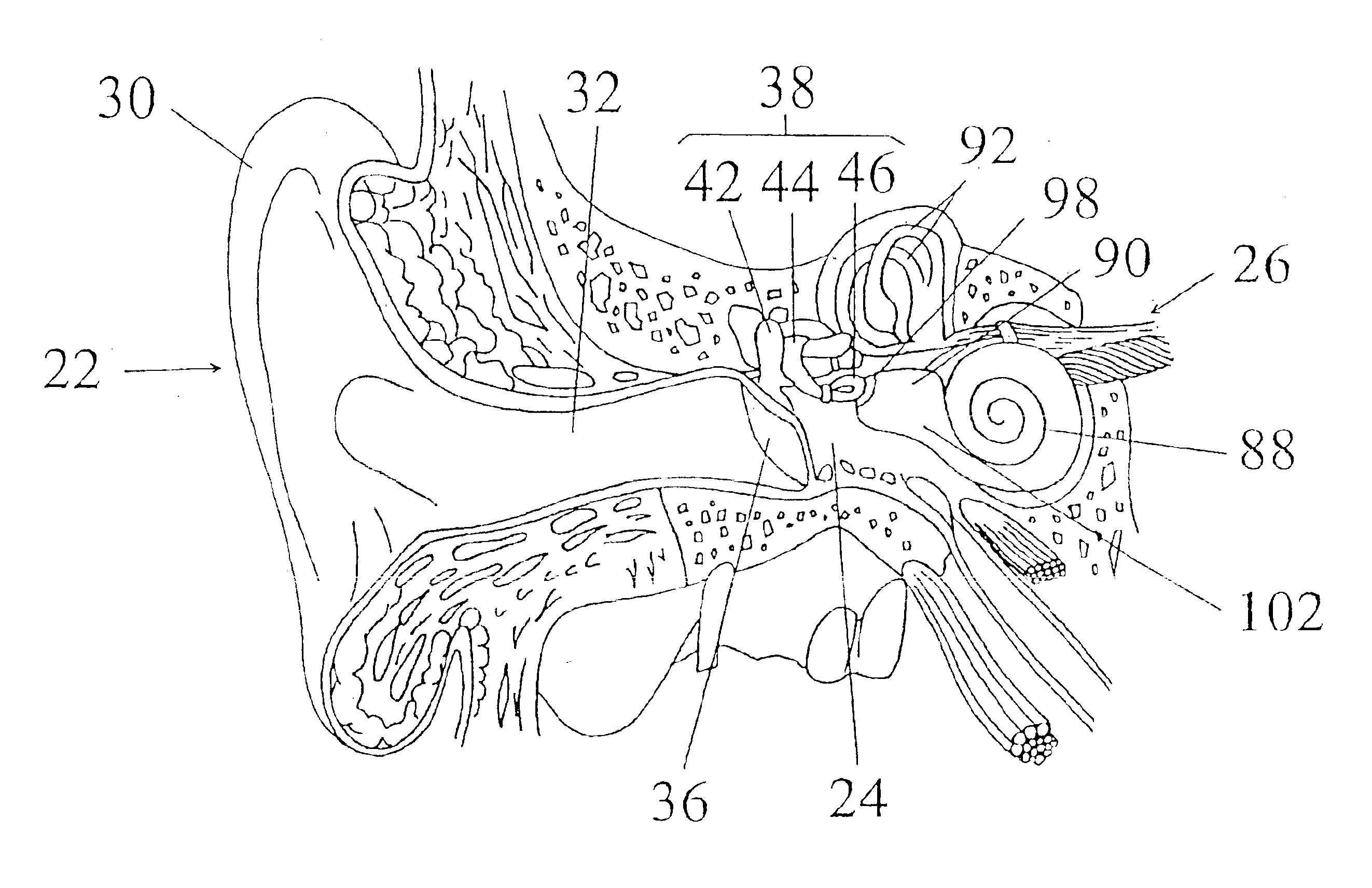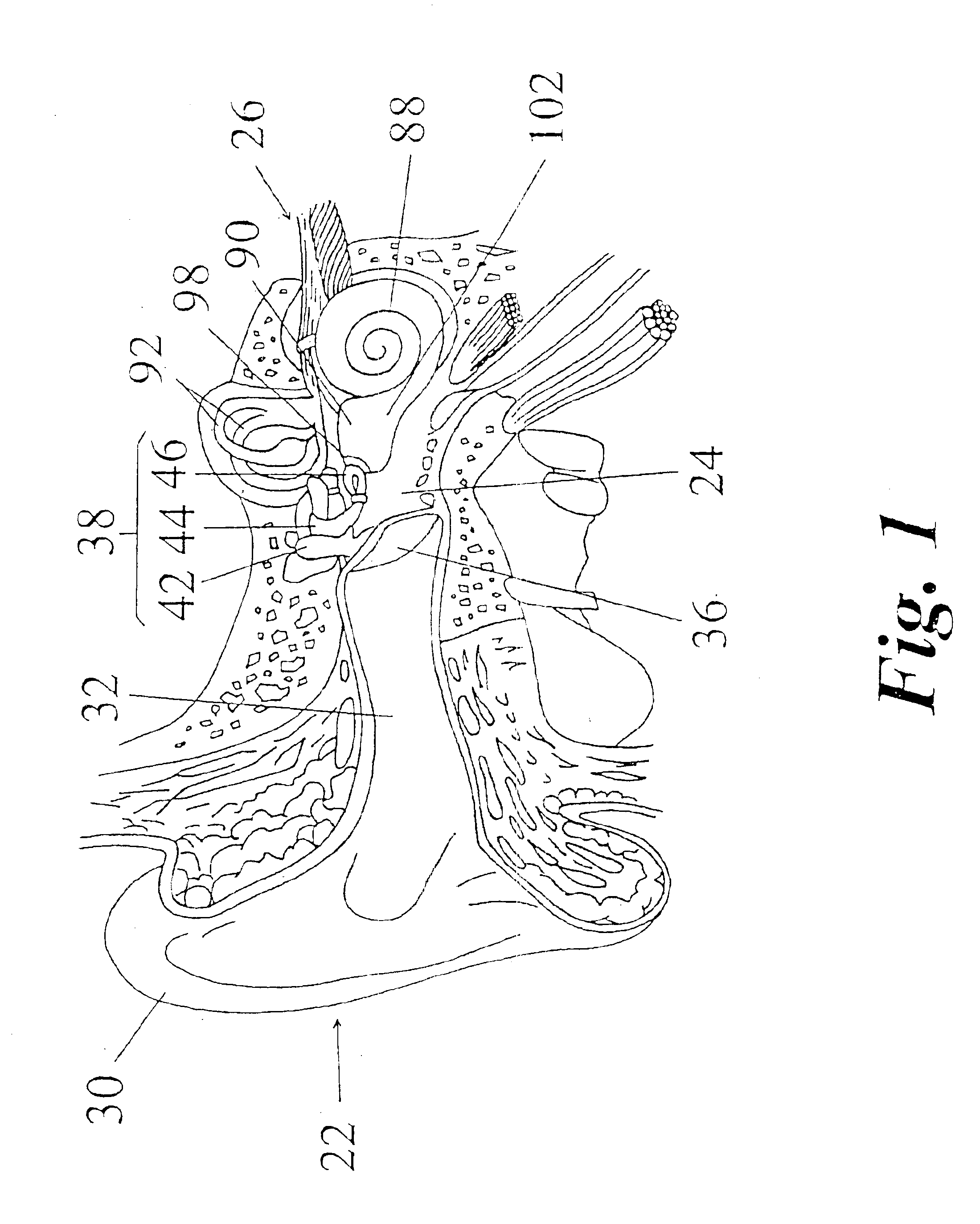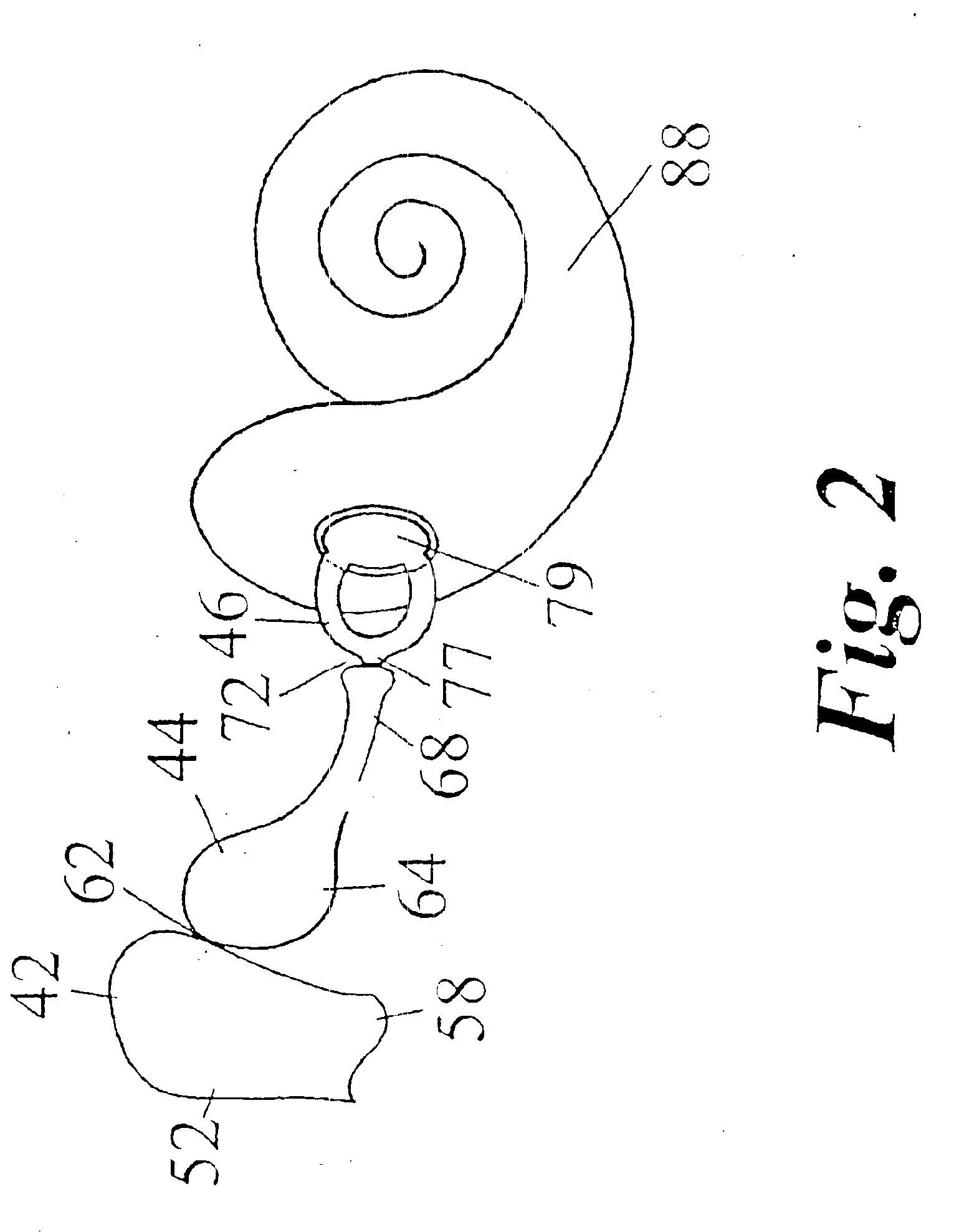Method for creating a coupling between a device and an ear structure in an implantable hearing assistance device
a technology of ear structure and implantable components, which is applied in the direction of deaf-aid sets, electrical devices, etc., can solve the problems of conductive hearing loss, difficulty in detecting, and requiring extremely fine adjustments
- Summary
- Abstract
- Description
- Claims
- Application Information
AI Technical Summary
Benefits of technology
Problems solved by technology
Method used
Image
Examples
Embodiment Construction
The invention provides an apparatus and method for damping vibrations in a mounting bracket assembly supporting an output transducer of an implantable hearing assistance system. Such a hearing assistance system augments the human auditory system in converting acoustic energy contained within sound waves into electromechanical signals delivered to the brain and interpreted as sound. Minimization of the undesired vibratory effect of the transducer back through component parts of the assembly improves the gain of the hearing assistance system, impairing increased hearing ability to the patient. This minimization is accomplished by providing a damping mechanism integral to the support assembly of the output transducer or, alternately, by providing a second transducer with an offsetting mass or spring or by providing a spring affixed to the support assembly.
The ear is the auditory organ of the body through which sound waves are delivered to the brain. FIG. 1 illustrates generally the sit...
PUM
 Login to View More
Login to View More Abstract
Description
Claims
Application Information
 Login to View More
Login to View More - R&D
- Intellectual Property
- Life Sciences
- Materials
- Tech Scout
- Unparalleled Data Quality
- Higher Quality Content
- 60% Fewer Hallucinations
Browse by: Latest US Patents, China's latest patents, Technical Efficacy Thesaurus, Application Domain, Technology Topic, Popular Technical Reports.
© 2025 PatSnap. All rights reserved.Legal|Privacy policy|Modern Slavery Act Transparency Statement|Sitemap|About US| Contact US: help@patsnap.com



